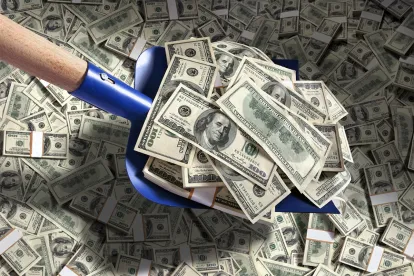On February 4, the Department of the Treasury published a study on the facilitation of money laundering and terrorist financing through the art trade. Among other considerations, the report discussed the risks of financial crimes in connection with NFTs. (See a previous post on NFTs from our sister blog here and a recent podcast here). The study found that the high-value art market has certain inherent qualities that make it potentially vulnerable to a range of financial crimes – as we noted above. NFT purchasers, marketplaces, issuers, and other intermediaries in NFT transactions should be aware of the Treasury Departments’ interest in regulation and the potential for abuse through NFT transactions. This Treasury Department report is the latest in a series of studies and reports by federal regulatory agencies that aim to warn investors about the potential for abuse.
Monitoring the movement of artwork is inherently more difficult than tracing currency because there is no automated, mandated electronic registry for artwork. According to the study, this risk is magnified in the NFT context:
-
NFTs can be used to conduct “self-laundering,” a process by which criminals purchase an NFT using tainted funds and proceed to sell and repurchase the NFT to themselves in order to create seemingly legitimate sales records on the blockchain. The criminal then sells the “washed” NFT to an unrelated party and receives untainted funds in return.
-
The structure of NFTs allows parties to transfer digital art without incurring potential financial, regulatory, or investigative costs related to the physical shipment of the art.
-
NFTs are anonymously held, making them particularly vulnerable to illicit use. An NFT collector must have a crypto wallet to buy and hold an NFT. Most crypto wallets are anonymous and the only information that is publicly revealed is the wallet address.
Digital art is the fastest growing sector of use-cases for NFT technology. The study states that “in the first three months of 2021, the market for NFTs generated a record $1.5 billion in trading and grew 2,627 percent over the previous quarter.” As a result, regulators are increasingly focused on preventing the illicit use of the technology. The Treasury study includes several considerations going forward for NFTs and other high-value art market participants:
-
Encourage the creation and enhancement of private-sector information-sharing programs to foster transparency among art market participants;
-
Update guidance and training for law enforcement, customs enforcement, and asset recovery agencies;
-
Use FinCEN recordkeeping authorities to support information collection and enhanced due diligence;
-
Bring certain art market participants under the U.S. Anti-Money Laundering (“AML”) and Countering the Financing of Terrorism (“CFT”) legal framework and obligate them to create and maintain AML/CFT programs.
Putting it Into Practice: This fast-moving area will require equally agile compliance mechanisms for NFT market participants that should include the following:
-
Stay ahead of the curve: assess whether your compliance program is compliant with AML/CFT obligations in the event NFTs come under their purview.
-
Have robust/comprehensive screening procedures: evaluate whether your screening procedures are sufficiently robust/comprehensive so as to know the ultimate natural owner of the artwork.
-
NFT market participants should be aware of any red flags in secondary marketplaces and of regulatory developments that could impact the industry.







 />i
/>i

